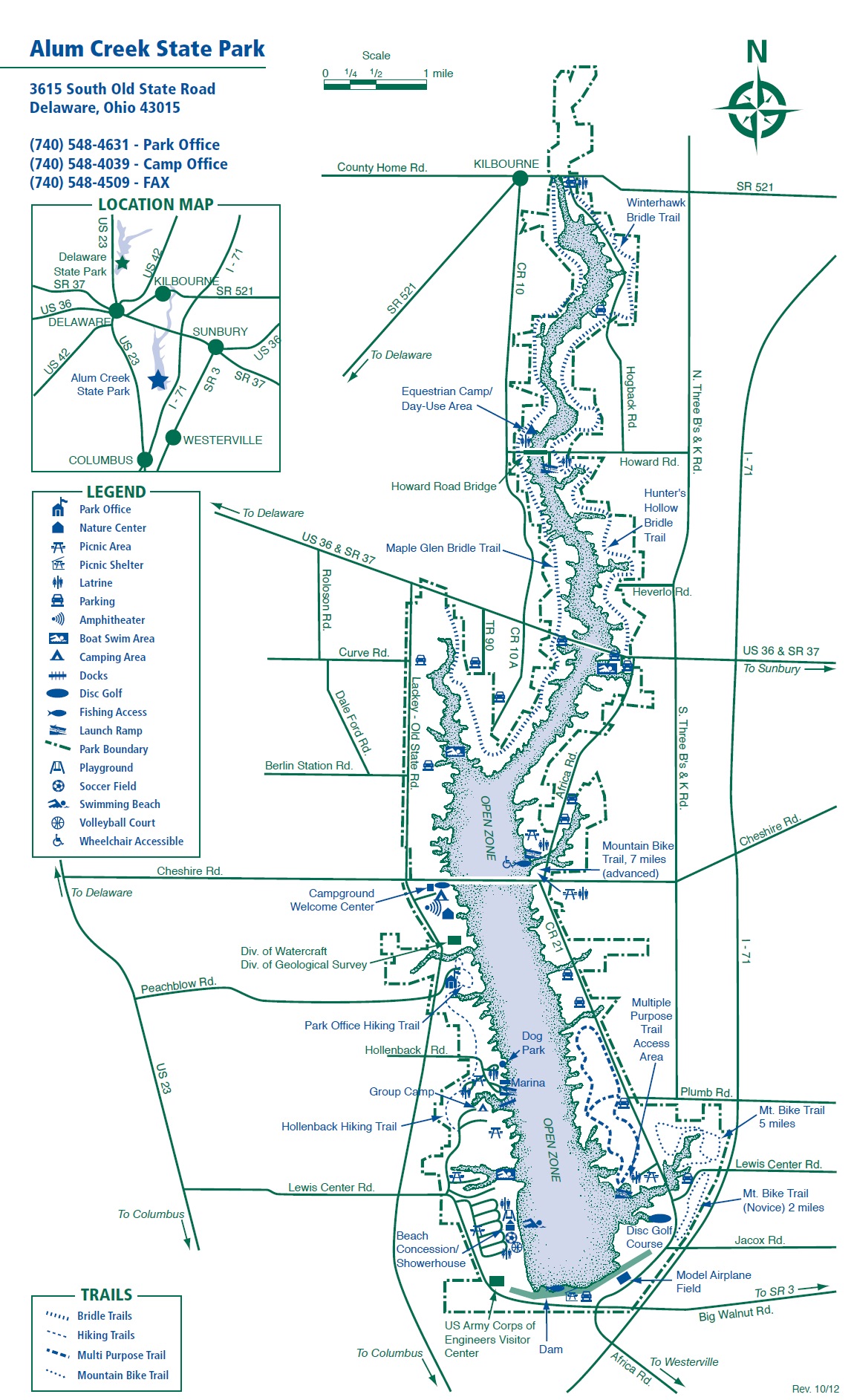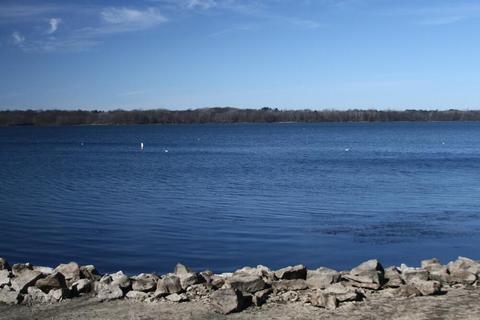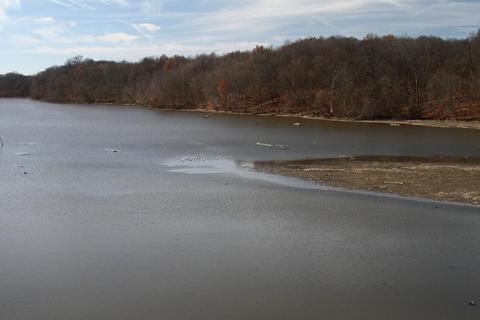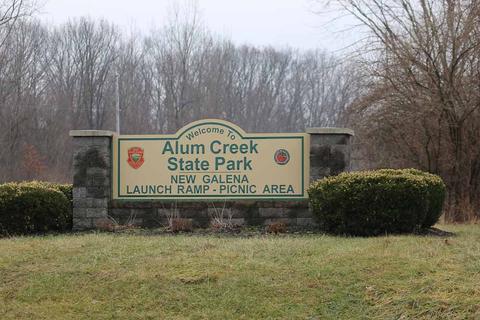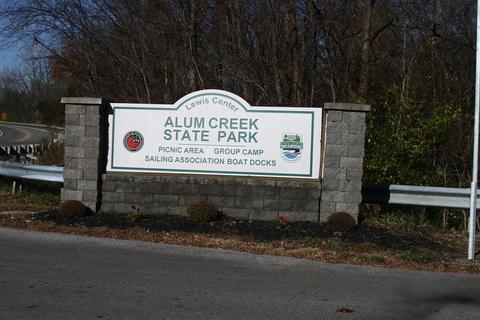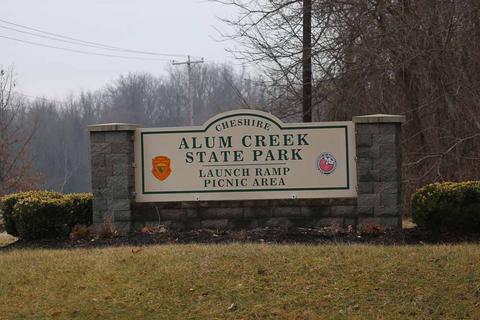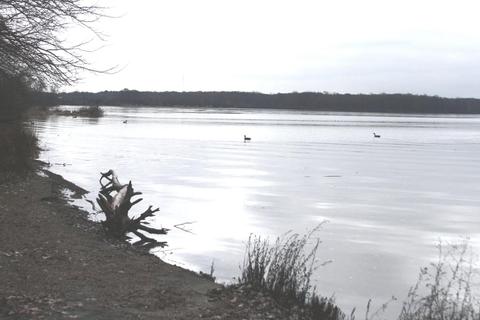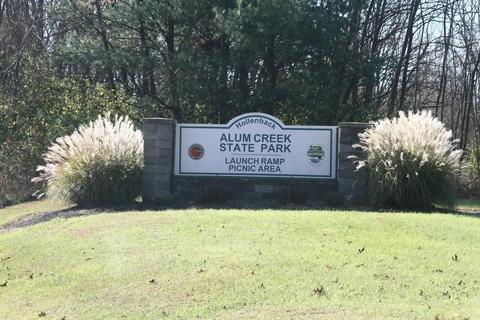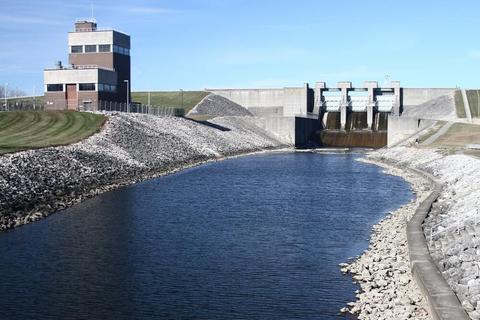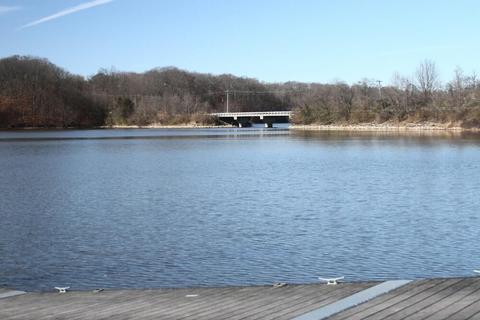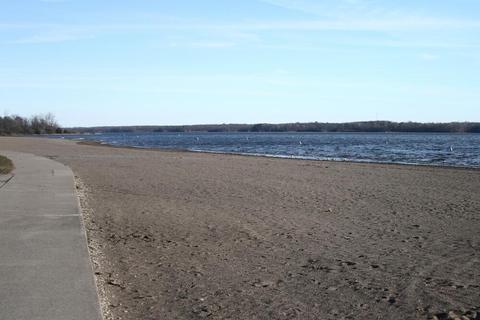
Alum Creek State Park
Alum Creek State Park
3615 South Old State Road Delaware, Ohio 43015
Official WebsiteAlum Creek State Park map
Tips for Birding
The park encompasses virtually all the shoreline of Alum Creek Reservoir, a large flood control reservoir southeast of Delaware. The entire park was bought as part of the land acquisitions for the reservoir in the early 1970s. Much of the area was originally farm fields, and has had over 3 decades to revert to scrubby overgrown fields. Mature forested areas are found only around the Visitor Center (southwestern shore) and at the northern end (Howard Road Bridge and Hogback Road). Be warned that the lake shoreline is open to hunting during waterfowl season (usually late October – early January).
From Delaware, travel east on OH-37 for 3 miles, then turn south on South Old State Road, which runs along the western border of the park. To reach the beach and dam, turn west off this road in about 6 miles on Lewis Center Road. From Columbus, take US-23 north to Lewis Center Road, then go east for about 2 miles to reach the beach and dam area. From I-71 (southbound), exit at Polaris Parkway going east, then turn north at Africa Road. This will go north for about 3 miles before reaching the dam. From I-71 (northbound), exit at OH-37 (Delaware-Sunbury exit) and travel west .3 mile before turning north on 3B and K Road (for the north end of the park) or .7 mile before turning south on Africa Road (for the east side of reservoir).
Birds of Interest
Winter
The reservoir often freezes over by January, so water birds are forced away. Sparrow flocks can be found at the East dam, the Visitor’s Center, and the Berlin Station access. Long-eared and Saw-whet Owls have been found in the pine grove east of the Park Headquarters, but with less frequency in recent years.
Spring
Northbound waterfowl often accumulate at several locations. The best locations are the Cheshire Causeway, the Campground Boat Launch, the Berlin Station access, and Hogback Road. An adult and immature Bald Eagle have been seen increasingly in recent springs, especially around the Plumb Road access, Cheshire Causeway, Berlin Station access, and Hogback Road. Land bird migration is most intense in the forested regions around the Howard Road bridge and along Hogback Road, although other sites also produce migrant flocks.
Summer
A nesting Osprey pair use platforms in the reservoir along Hogback Road. Woods along the northern reaches of the reservoir harbor remnant populations of forest birds, highlighted by Cerulean Warblers. Look and listen for them at Maple Glen trail (Howard Road Bridge), Hogback Preserve, and Hogback Road. An adult and juvenile Common Loon were found off the Cheshire causeway in the summer of 2003, so check for loons here during the summer months. Cliff Swallows currently nest at the dam and at the Cheshire causeway and nesting colonies are expanding to other bridges around the reservoir.
Fall
Migrant waterfowl can be seen at many locations along the reservoir. The shallow, northern end along Hogback Road is best for dabblers, while southern accesses at Berlin Station, the Hollenback marina, the beach area, and the dam are better for loons and diving ducks. Depending upon water levels, Hogback Road can be a very effective shorebird trap and there are often accumulations of 100-200 birds in late August through September. Recent rarities have included Buff-breasted Sandpiper and American Avocet. The edges of the wide, lower reservoir can magnify land bird migration in the fall. Look for accumulations of migrants at the Cheshire Access, the Plumb Road access, New Galena, the Visitor’s Center, the Park Headquarters, and the Berlin Station access.
About this Location
Alum Creek rests in the midst of the fertile agricultural till plains and river valleys of Delaware County. In contrast to the surrounding farmlands, the park offers a diverse array of natural features. Cliffs of Ohio shale are notable in many areas, exposed as Alum Creek and other streams cut through underlying bedrock. The shale was formed as mud washed into the ancient sea which covered the area several hundred million years ago. The dark hue of the rock is due to the mixture of a carbonized plant material and mud that formed the shale.
The rich soils of Delaware County gave rise to a luxuriant beech-maple forest after the retreat of the glaciers about 12,000 years ago. That original forest has long since been cut but a healthy second-growth forest is preserved in the park. The woodlands harbor a variety of plant species and offer the interested observer beautiful displays of wildflowers and wildlife. Large-flowered trillium, wild geranium, bloodroot, and spring beauties carpet the forest floor. The forest is home to fox squirrel, woodchuck, rabbit, white-tail deer, and many other species of wildlife.
Notable Trails
Alum Creek State Park Trails
There are 3 hiking trails in Alum Creek State Park.
Park Office Trail – 1.5 miles – easy
Hollenback Trail – 1.5 miles – easy
Rocks to Roots Trail – 4.1 miles – moderate
One Multi-Purpose Trail (Hiking, Snowmobile, Dog Sledding, Cross-country Skiing) is a moderate 7 Miles.
The park also has 3 mountain bike trails.
Mountain Bike Trail – 2 miles – easy
Mountain Bike Trail – 5 miles – moderate
Mountain Bike Trail – 7 miles – difficult
Thirty-eight miles of bridle trails wind along the lakeshore through mature beech-maple forests and across deep ravines. Riders must provide their own mounts.
Features
Restrooms on site
Content from Official Website and Ohio Ornithological Society
